
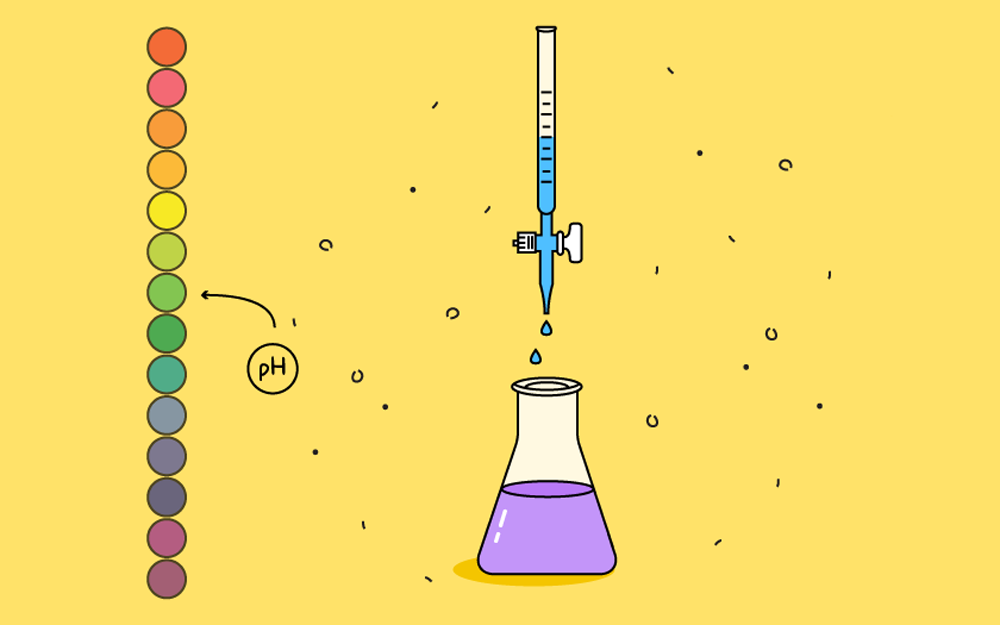
An acid is a chemical, which when added to water, increases the amount or concentration of hydrogen ions, or H+, making it acidic.
A hydrogen ion (H+) is just a hydrogen atom without its electron. And, as a hydrogen atom is just one electron and one proton, the term hydrogen ion (H+) can be used interchangeably with proton.
How does a chemical increase the concentration of H+ when added to water?
Historically, three models were proposed to describe how a chemical increases H+. The first model was proposed by Svante Arrhenius. He defined an acid as a chemical that “releases” H+ into water.
The second model was developed independently by chemists Johannes Nicolaus Brønsted and Thomas Martin Lowry. They defined an acid as a chemical that “donates” H+ to water, like the Arrhenius model.
The third model was proposed by Gilbert Lewis. He defined an acid as a chemical that can “accept” a pair of electrons. According to this model, H+ is considered an acid because it can accept a pair of electrons from a hydroxide base (OH–). This definition is the most comprehensive as it covers all chemical acids. But without a background in chemistry, it’s more difficult to grasp.
Acids can be classified into different subgroups depending on their properties and atomic structure. There are strong acids, weak acids, concentrated and dilute acids, oxyacids and hydracids, and organic and inorganic acids.
Strong acids are chemicals that donate all their H+ when dissolved in water. The most common example is hydrochloric acid or HCl. When dissolved, it completely splits into H+ and Cl–.
Strong acids can be corrosive because they donate all the H+ to water. A high concentration of H+ in water can react with biological tissue. Protective clothing must be worn when handling strong acids. If handled properly, they can be useful. Here is a list of some common strong acids and uses.
Weak acids, on the other hand, donate only a tiny fraction of H+ when dissolved in water.
Concentrated and dilute acids shouldn’t be confused with strong and weak acids. Whether an acid is strong or weak depends on properties of the acid itself, as we already discussed. When you add an acid to water, we dilute it. If we dilute it a little, it’s concentrated. The more water we add, the more diluted it becomes.
Concentrated acids can be dangerous even if they’re strong or weak acids. Concentrated weak acids like acetic acid or phosphoric acid can cause burns. But diluted acids can be useful, like acetic acid in vinegar, which is only 5% acetic acid and 95% water.
When we use acids, we typically dilute them with water to a useful strength. Pure acids can be either solid, like a powder, or liquids. We can calculate how much water to add to achieve the strength we want. For example, an 80% HCl solution can be made by adding 4 parts 100% HCl to 1-part water. Likewise, a 5% acetic acid solution (vinegar) can be made by adding 1-part acetic acid to 19-parts water.
Acids can have alternative classifications based on their chemical structure. An oxyacid is an acid that has at least one oxygen atom, such as sulphuric acid (H2SO4) or acetic acid (CH3COOH). A hydracid is an acid that doesn’t have any oxygen atoms, such as hydrochloric acid (HCl).
By definition, any chemical with carbon atoms is an organic chemical. So, organic acids have carbon, such as acetic acid (CH3COOH) or lactic acid (C3H6O3), while inorganic acids don’t contain carbon, like hydrochloric acid (HCl) or sulphuric acid (H2SO4).
pH is a way to measure the acidity or the H+ concentration in a solution. pH is calculated using the equation: pH = -log[H+], where [H+] is the concentration of H+ in water. So, if [H+] is 0.001 Molar (M) or 10-3, then the pH is 3. If the [H+] is 0.1 M or 10-1, then the pH is 1. The higher the [H+], the lower the pH value.
We can measure the pH of a solution using a pH meter. A pH meter is like a voltmeter that measures voltage. H+ has a positive charge. The more H+, the higher the positive charge, and the higher potential to generate an electrical current.
To measure the pH of a solution, the pH meter must first be calibrated with a solution of a known pH. Typically, pH meters are calibrated with solutions at pH 4, 7, and 10. Once the pH meter has been calibrated, it’s dipped into the solution and the pH can be read.
The pKa of an acid is a numerical way of describing the strength of an acid. As we discussed, strong acids are strong because they release all H+ to water, while weak acids release only a small fraction of H+. The pKa value tells us how much H+ is released.
For example, when we mix acetic acid (CH3COOH) and water, some of the H+ is released (or dissociates). In Figure 1, the released H+ binds to water (H2O) to form H3O+ (hydronium ion) leaving a negatively charged acetate ion (CH3COO–), called the conjugate base.
The Ka value, or dissociation constant, is the ratio of released H+ and CH3COO– to acetic acid and is described by the equation: Ka = ([H3O+][CH3COO–]) / [CH3COOH)]. Acids that release more H+ have a higher Ka value. And like pH, we use a log scale for convenience. So, the pKa = -log(Ka).
For example, acetic acid has a pKa = 4.76, meaning a ([H3O+][CH3COO–]) / [CH3COOH)] ratio of 10-4.76 or 0.000017. Indeed, a tiny fraction. On the other hand, HCl has a pKa of -6.3. Likewise, the ratio of ([H+][Cl–]) / [HCl] is 106.3 or almost 2,000,000!
It’s also possible to determine the pKa of an acid by adding small amounts of a strong base such as NaOH (titration). As NaOH is added to an acetic acid solution, it splits into Na+ and OH–. The OH– removes H+ from acetic acid to generate H2O and an acetate ion, CH3COO–, lowering the amount of available H+, causing the pH to rise. With each addition of NaOH, the pH rises incrementally. Eventually, all the H+ is removed from the acid and the pH will reach a limit. If we plot on a graph the pH values versus the amount of NaOH (titration curve), the pKa value will be the midpoint in the rise (or inflection point).
Acids can be made by mixing other chemicals together in specific ways. Here are some examples.
Acids are critical for life. The most famous biological acid is deoxyribonucleic acid or DNA. DNA contains phosphoric acid. But as physiological pH is around 7, all the H+ has been removed leaving DNA with a negative charge.
Amino acids are another important acid (Figure 4). The acid portion of an amino acid is like acetic acid that reacts with an amino group of another amino acid forming a chain. Chains with more than 40 amino acids are otherwise known as proteins.
Figure 4: The general structure of an amino acid. There are 20 different R groups making up 20 different amino acids.
The release of H+ is used to generate chemical energy used by the plants and animals. Plants cells use light energy from the sun to pump H+ across a membrane to create an H+ gradient, with more H+ on one side of the membrane. The flow of H+ back through the membrane generates adenosine triphosphate (ATP). ATP is the chemical energy source plants use to make glucose from water and carbon dioxide (CO2). In a similar fashion, animal cells use the energy from the breakdown of glucose to pump H+ across a membrane to generate ATP for energy.
Acids are an important part of our world. They’re handy in the kitchen and around the home. By understanding their properties, they’ve played a key role in many scientific and industrial applications, and are part of many critical biochemical processes.
In behavioral neuroscience, the Open Field Test (OFT) remains one of the most widely used assays to evaluate rodent models of affect, cognition, and motivation. It provides a non-invasive framework for examining how animals respond to novelty, stress, and pharmacological or environmental manipulations. Among the test’s core metrics, the percentage of time spent in the center zone offers a uniquely normalized and sensitive measure of an animal’s emotional reactivity and willingness to engage with a potentially risky environment.
This metric is calculated as the proportion of time spent in the central area of the arena—typically the inner 25%—relative to the entire session duration. By normalizing this value, researchers gain a behaviorally informative variable that is resilient to fluctuations in session length or overall movement levels. This makes it especially valuable in comparative analyses, longitudinal monitoring, and cross-model validation.
Unlike raw center duration, which can be affected by trial design inconsistencies, the percentage-based measure enables clearer comparisons across animals, treatments, and conditions. It plays a key role in identifying trait anxiety, avoidance behavior, risk-taking tendencies, and environmental adaptation, making it indispensable in both basic and translational research contexts.
Whereas simple center duration provides absolute time, the percentage-based metric introduces greater interpretability and reproducibility, especially when comparing different animal models, treatment conditions, or experimental setups. It is particularly effective for quantifying avoidance behaviors, risk assessment strategies, and trait anxiety profiles in both acute and longitudinal designs.
This metric reflects the relative amount of time an animal chooses to spend in the open, exposed portion of the arena—typically defined as the inner 25% of a square or circular enclosure. Because rodents innately prefer the periphery (thigmotaxis), time in the center is inversely associated with anxiety-like behavior. As such, this percentage is considered a sensitive, normalized index of:
Critically, because this metric is normalized by session duration, it accommodates variability in activity levels or testing conditions. This makes it especially suitable for comparing across individuals, treatment groups, or timepoints in longitudinal studies.
A high percentage of center time indicates reduced anxiety, increased novelty-seeking, or pharmacological modulation (e.g., anxiolysis). Conversely, a low percentage suggests emotional inhibition, behavioral avoidance, or contextual hypervigilance. reduced anxiety, increased novelty-seeking, or pharmacological modulation (e.g., anxiolysis). Conversely, a low percentage suggests emotional inhibition, behavioral avoidance, or contextual hypervigilance.
The percentage of center time is one of the most direct, unconditioned readouts of anxiety-like behavior in rodents. It is frequently reduced in models of PTSD, chronic stress, or early-life adversity, where animals exhibit persistent avoidance of the center due to heightened emotional reactivity. This metric can also distinguish between acute anxiety responses and enduring trait anxiety, especially in longitudinal or developmental studies. Its normalized nature makes it ideal for comparing across cohorts with variable locomotor profiles, helping researchers detect true affective changes rather than activity-based confounds.
Rodents that spend more time in the center zone typically exhibit broader and more flexible exploration strategies. This behavior reflects not only reduced anxiety but also cognitive engagement and environmental curiosity. High center percentage is associated with robust spatial learning, attentional scanning, and memory encoding functions, supported by coordinated activation in the prefrontal cortex, hippocampus, and basal forebrain. In contrast, reduced center engagement may signal spatial rigidity, attentional narrowing, or cognitive withdrawal, particularly in models of neurodegeneration or aging.
The open field test remains one of the most widely accepted platforms for testing anxiolytic and psychotropic drugs. The percentage of center time reliably increases following administration of anxiolytic agents such as benzodiazepines, SSRIs, and GABA-A receptor agonists. This metric serves as a sensitive and reproducible endpoint in preclinical dose-finding studies, mechanistic pharmacology, and compound screening pipelines. It also aids in differentiating true anxiolytic effects from sedation or motor suppression by integrating with other behavioral parameters like distance traveled and entry count (Prut & Belzung, 2003).
Sex-based differences in emotional regulation often manifest in open field behavior, with female rodents generally exhibiting higher variability in center zone metrics due to hormonal cycling. For example, estrogen has been shown to facilitate exploratory behavior and increase center occupancy, while progesterone and stress-induced corticosterone often reduce it. Studies involving gonadectomy, hormone replacement, or sex-specific genetic knockouts use this metric to quantify the impact of endocrine factors on anxiety and exploratory behavior. As such, it remains a vital tool for dissecting sex-dependent neurobehavioral dynamics.
The percentage of center time is one of the most direct, unconditioned readouts of anxiety-like behavior in rodents. It is frequently reduced in models of PTSD, chronic stress, or early-life adversity. Because it is normalized, this metric is especially helpful for distinguishing between genuine avoidance and low general activity.
Environmental Control: Uniformity in environmental conditions is essential. Lighting should be evenly diffused to avoid shadow bias, and noise should be minimized to prevent stress-induced variability. The arena must be cleaned between trials using odor-neutral solutions to eliminate scent trails or pheromone cues that may affect zone preference. Any variation in these conditions can introduce systematic bias in center zone behavior. Use consistent definitions of the center zone (commonly 25% of total area) to allow valid comparisons. Software-based segmentation enhances spatial precision.
Evaluating how center time evolves across the duration of a session—divided into early, middle, and late thirds—provides insight into behavioral transitions and adaptive responses. Animals may begin by avoiding the center, only to gradually increase center time as they habituate to the environment. Conversely, persistently low center time across the session can signal prolonged anxiety, fear generalization, or a trait-like avoidance phenotype.
To validate the significance of center time percentage, it should be examined alongside results from other anxiety-related tests such as the Elevated Plus Maze, Light-Dark Box, or Novelty Suppressed Feeding. Concordance across paradigms supports the reliability of center time as a trait marker, while discordance may indicate task-specific reactivity or behavioral dissociation.
When paired with high-resolution scoring of behavioral events such as rearing, grooming, defecation, or immobility, center time offers a richer view of the animal’s internal state. For example, an animal that spends substantial time in the center while grooming may be coping with mild stress, while another that remains immobile in the periphery may be experiencing more severe anxiety. Microstructure analysis aids in decoding the complexity behind spatial behavior.
Animals naturally vary in their exploratory style. By analyzing percentage of center time across subjects, researchers can identify behavioral subgroups—such as consistently bold individuals who frequently explore the center versus cautious animals that remain along the periphery. These classifications can be used to examine predictors of drug response, resilience to stress, or vulnerability to neuropsychiatric disorders.
In studies with large cohorts or multiple behavioral variables, machine learning techniques such as hierarchical clustering or principal component analysis can incorporate center time percentage to discover novel phenotypic groupings. These data-driven approaches help uncover latent dimensions of behavior that may not be visible through univariate analyses alone.
Total locomotion helps contextualize center time. Low percentage values in animals with minimal movement may reflect sedation or fatigue, while similar values in high-mobility subjects suggest deliberate avoidance. This metric helps distinguish emotional versus motor causes of low center engagement.
This measure indicates how often the animal initiates exploration of the center zone. When combined with percentage of time, it differentiates between frequent but brief visits (indicative of anxiety or impulsivity) versus fewer but sustained center engagements (suggesting comfort and behavioral confidence).
The delay before the first center entry reflects initial threat appraisal. Longer latencies may be associated with heightened fear or low motivation, while shorter latencies are typically linked to exploratory drive or low anxiety.
Time spent hugging the walls offers a spatial counterbalance to center metrics. High thigmotaxis and low center time jointly support an interpretation of strong avoidance behavior. This inverse relationship helps triangulate affective and motivational states.
By expressing center zone activity as a proportion of total trial time, researchers gain a metric that is resistant to session variability and more readily comparable across time, treatment, and model conditions. This normalized measure enhances reproducibility and statistical power, particularly in multi-cohort or cross-laboratory designs.
For experimental designs aimed at assessing anxiety, exploratory strategy, or affective state, the percentage of time spent in the center offers one of the most robust and interpretable measures available in the Open Field Test.
Written by researchers, for researchers — powered by Conduct Science.



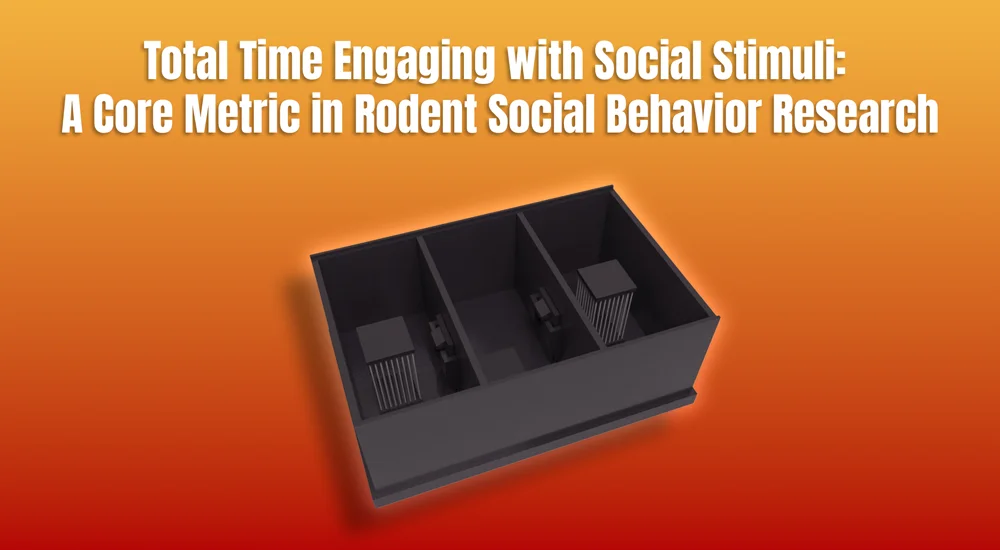
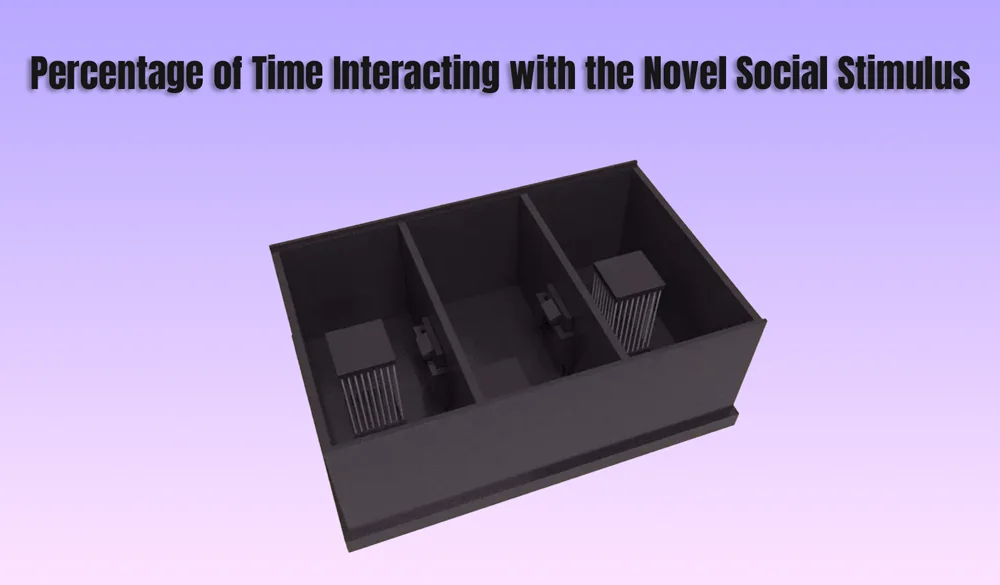
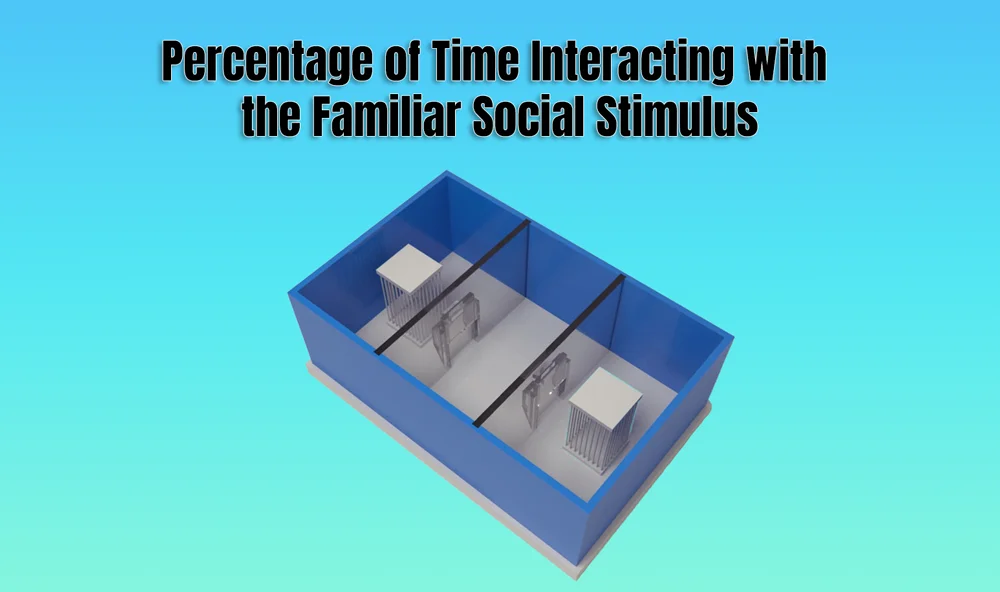

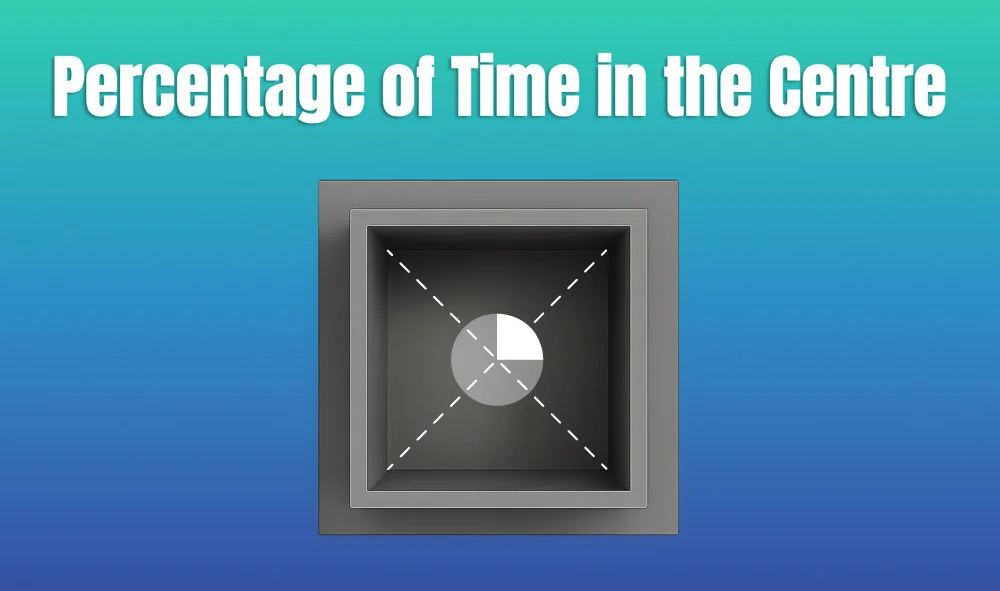
Monday – Friday
9 AM – 5 PM EST
DISCLAIMER: ConductScience and affiliate products are NOT designed for human consumption, testing, or clinical utilization. They are designed for pre-clinical utilization only. Customers purchasing apparatus for the purposes of scientific research or veterinary care affirm adherence to applicable regulatory bodies for the country in which their research or care is conducted.